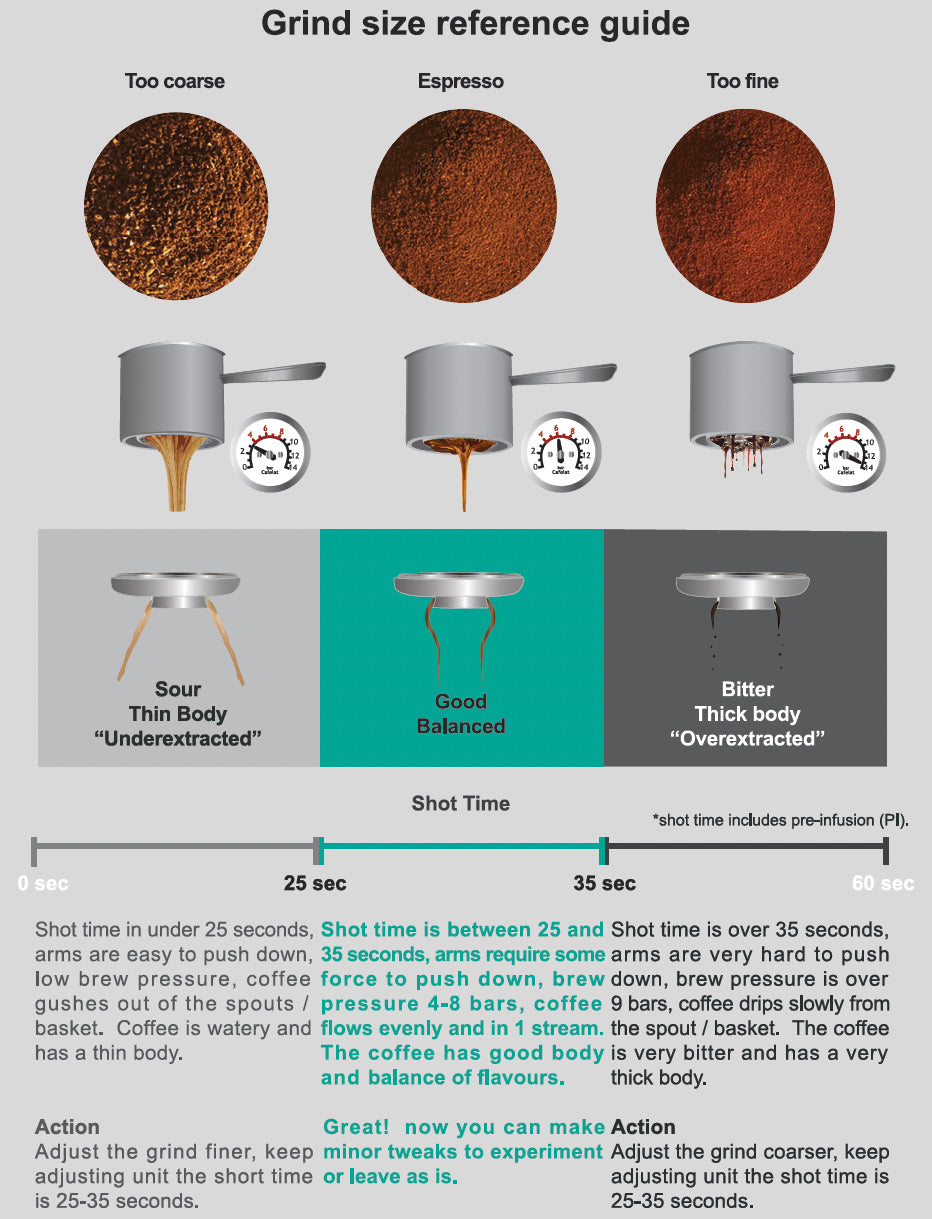As a home barista, one of the most rewarding aspects of brewing espresso is mastering the timing of extraction. Achieving the perfect espresso involves a delicate balance of timing, grind size, and extraction flow. While this process may initially seem overwhelming, understanding its nuances can significantly elevate your coffee-making skills. Dive into the features and performance in our DeLonghi Magnifica Evo review
Why Timing Matters in Espresso Extraction
Timing plays a critical role in espresso extraction, directly influencing the flavor profile and consistency of your shot. Proper timing ensures that the right amount of flavor is extracted from the coffee grounds. If your shot extracts too quickly, you'll likely experience under-extraction, characterized by a sour, sharp taste and a lack of body. Conversely, an overly long extraction leads to bitterness and an unpleasant aftertaste, indicating over-extraction. Learn why this classic model stands out in our DeLonghi Magnifica S review

Methods to Time Your Espresso Extraction
When it comes to timing your espresso extraction, there are two popular methods: starting the timer when the pump activates or when the first drop of espresso falls into the cup. Personally, I prefer starting the timer as soon as I press the espresso button. This approach includes the pre-infusion period, which helps maintain consistency across shots. Discover the convenience and technology in our Philips LatteGo 5400 review
Ideal Extraction Time for Espresso
The recommended extraction time for espresso typically falls between 25 and 35 seconds. From my experience, aiming for around 30 seconds yields consistently excellent results. If your shot pulls in under 25 seconds, it’s likely under-extracted and will taste weak or sour. On the other hand, if it takes longer than 35 seconds, you're risking over-extraction, resulting in a bitter flavor. Explore the compact design and features in our Philips 3200 LatteGo review
Adjusting Grind Size for Optimal Timing
Grind size is pivotal in determining espresso extraction timing. A finer grind slows the extraction process, while a coarser grind speeds it up. If your shot pulls too quickly (under 25 seconds), the grind is likely too coarse. Conversely, if it's taking longer than 35 seconds, the grind may be too fine. After experimenting with various settings, I found the perfect grind for my machine, which made a significant difference in both timing and flavor. Get all the details on versatility and functionality in our Philips 4300 LatteGo review
Evaluating Your Espresso: Timing Isn’t Everything
While timing is crucial, it’s not the sole indicator of a great espresso. Taste is the ultimate guide. I focus on achieving a flavor balance in every shot. A well-extracted espresso should showcase a harmonious blend of sweetness, acidity, and body. If the shot tastes sour and thin, it’s likely under-extracted, suggesting a finer grind or brew ratio adjustment. If it tastes bitter and dry, you’ve likely over-extracted and may need to coarsen the grind or shorten the extraction time. Dive into the features and performance in our DeLonghi Magnifica Evo review
Troubleshooting Common Espresso Extraction Issues
Here are some helpful tips for addressing common espresso problems:
- Under-extraction: If the shot pulls too quickly (under 25 seconds) and tastes sour or flat, it’s often due to a coarse grind. Try grinding finer and testing again.
- Over-extraction: If the shot takes too long (over 35 seconds) and has a bitter, dry finish, the grind is likely too fine. Adjust by grinding coarser to find the sweet spot.
The Impact of Pre-Infusion on Extraction Timing
Pre-infusion can significantly affect extraction timing. Many high-end espresso machines feature a pre-infusion mode, where water sits on the coffee grounds before full pressure is applied. Including this pre-infusion time in your overall extraction process can lead to more consistent results. If your machine doesn’t have automatic pre-infusion, you can simulate it by briefly starting and stopping the pump before proceeding with full extraction. Learn why this classic model stands out in our DeLonghi Magnifica S review
Experimenting with Brew Ratios
Another important factor in espresso extraction is the brew ratio—the relationship between the amount of coffee grounds used and the liquid espresso produced. A common starting point is a 1:2 ratio, such as using 18 grams of ground coffee to yield 36 grams of espresso. I’ve enjoyed experimenting with adjusting this ratio depending on the beans I use, uncovering unique flavor profiles. Discover the convenience and technology in our Philips LatteGo 5400 review
For lighter roasts, extending the extraction time or adjusting to a lower brew ratio (like 1:2.5) can enhance bright, fruity notes. For darker roasts, sticking closer to the standard 1:2 ratio minimizes bitterness while maintaining a rich, full-bodied shot. Explore the compact design and features in our Philips 3200 LatteGo review

The Importance of Tasting and Sensory Evaluation
Ultimately, taste is the most critical aspect of espresso extraction. While timing offers valuable guidance, it’s your palate that determines whether the shot is truly excellent. I’ve had shots that extracted perfectly in 30 seconds but still didn’t taste right due to improper grind size or brew ratio. By experimenting with these variables, I’ve refined my espresso-making technique and now consistently produce delicious results. Get all the details on versatility and functionality in our Philips 4300 LatteGo review
Conclusion
Mastering the art of espresso extraction is a journey that requires patience and practice. By focusing on precise timing, adjusting grind size, experimenting with brew ratios, and tasting the final shot, you'll soon be crafting perfect espressos every time. The process is both an art and a science, but with dedication and exploration, you’ll find the rewards are more than worth the effort.
